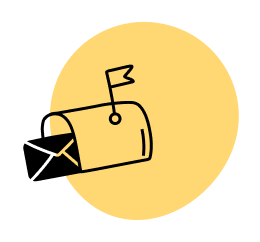Today I am going to share with you how to make passive income online, with three specific business models to choose from:
- The FP Model: Starting with Active Income
- The AA Model: Advertising Your Way to Income
- The EP Model: Making Money By Being Expert Enough
But first, something we all know but an important ongoing reminder: The internet is an amazing place, folks! I probably don’t need to tell you there’s more than one way to make money online. And today, I’m going to give you the lowdown on three strategies you can use to do just that!
I’ve built several businesses since 2008 using one or more of these models. I’ve been featured in magazines and articles across the globe, and since I started my journey I’ve generated over $5M in earnings from these businesses. All of my income and expenses for those businesses dating back to October 2008 have been tracked publicly on SPI.com. You can see 10 years of income reports here.
But you don’t have to read all of my income reports to learn how I’ve made these three strategies work for me—or how they can work for you.
In this post, I’ll distill what I’ve learned into three business models you can choose from to decide which path you want to go down.
Those three models are the FP, AA, and EP models.
“But those are just acronyms, Pat! Tell me what they meeeeeaan!”
Fear not. I’ll explain them all, and help you figure out which one suits you best.
A Quick Primer on Passive Income
But first, let’s about talk passive income! What is passive income? There are many different definitions out there, but mine goes something like this: Passive income is all about building online businesses that can work for you, that allow you to generate income, and grow and scale, without a real-time presence. In other words, you don’t trade time for money. You build something up front that can continue to work for you over time.
In SPI Podcast Sessions 192, 193, and 194, I go a little deeper on what passive income is, which you can listen to here:
“But Pat,” you might be asking, “is this really possible?” It’s definitely possible. And you don’t need a huge investment, either. Unlike investments such as real estate or stocks, you don’t need a ton of money to start to build something.
But there’s one thing you need to be super clear on. It’s definitely not easy to do. Some people may tell you there’s a magic button or blueprint you can use to get rich, all by doing nothing. Don’t get me started on people who say you can make it happen overnight. No way, no how. It takes a lot of hard work. You’ve got to put in the hours.
You have to work hard now to build assets that will continue to work for you later. But once you start to build that passive income stream, you start to gain a little flexibility and freedom. You have a little more time to do more things, build even more passive income streams—or do fewer things, if that’s what you prefer!
So as I introduce these three business models to you, realize that yes, they all take time, but that time will also be very much worth it.
Cool? Okay, let’s get started.
The FP Model: Starting with Active Income
FP is the Freelance to Product model. In this model, you start by freelancing, then you find a problem that can be solved with a product.
Yes, we’re talking about passive income. And yes, freelancing is active income. So what’s the deal? To be perfectly honest, I believe freelancing is the #1 way to get started a building business of your own. You’ll learn a lot of skills, and you’ll get paid a lot quicker, too. You need some active income first!
But the biggest reason I recommend starting with freelancing is you’ll get to know the industry you’re in really well. You’ll learn it so well, that you’ll be able to find the holes, the opportunities, that allow you to create a successful product-based business.
Let me tell you about my friend Brian Casel. He was a freelance web designer who used to bill all his work by the project and sometimes by the hour; it was all tied to his time. He could only fit in a certain number of projects, and he was basically living project to project. It was not an ideal situation.
Brian had found a huge need for web design in the restaurant and food truck space. After getting tired of working with client after client, he decided to turn his service-based business into a product-based one. He made his services more standardized and productized. He eliminated all his client work and created templates and products to serve that market instead. And it’s been going great for him.
You can check out my interview with Brian in the Smart Passive Income Podcast #158.
All active businesses can be turned into more passive businesses by using products you’ve already made, by using software to do a lot of the legwork, and even having other humans do some of the work, too.
The AA Model: Advertising Your Way to Income
Next up, I’ll tell you how I made my first bit of passive income in 2008 with business model #2: the AA Model.
AA stands for the Audience and Advertising Model. It’s one of the most-used models for building passive income online—but it does come with a fair number of warnings, which I’ll share with you in a minute.
If you’re a YouTube personality, this is how you generate your income. An amazing example of this how Antonio Centeno got 1 million YouTube subscribers. If you’re a blogger who gets a lot of traffic to your site and uses advertising or sponsorships, then you’re also following the AA Model. Got a podcast with sponsorships? Same deal. I talk about successful podcast sponsorships and other ways to make money podcasting here:
You have an audience, and you have advertisers that want to get in front of that audience, so you marry the two and get paid for it.
When I started building my architecture-related business in 2008, I made my first dollar through advertising. I’d spent a lot of time and money building the site and getting traffic. Then one day I threw an ad on the site one day, and I made $1.18. Sure, I could find that much under my couch cushions—but that’s not the point! The point is that I was able to build something online, put an ad up, and make money without having to do anything. I learned it was possible, and it motivated me to move forward.
Eventually, I put more ads on the site. Traffic continued to grow, and I started earning between $30 and $50 a day just from advertising.
Then I built a brand-new site, got even more traffic, put ads on it, and . . . didn’t make more than $50 after six months of advertising. And therein lies one of the downsides of the AA Model. Ads are not super-predictable, especially auto-generated ones like those through Google AdSense.
There’s a second downside to this model. Although I’ve done advertising and sponsorships in the past, and have made hundreds of thousands of dollars doing so, the truth is it takes a lot of time for this business model to start to generate income for you, because you need to build that audience first. In addition, what happens when you build your audience on a platform that ends up changing its algorithm, affecting how often you actually get seen by the audience you’ve built?
In order to build an audience, you need to have a platform. You need to have something worth following and sharing; something that’s valuable to others. And that, of course, takes time. That’s not to say you can’t build a huge audience in a short amount of time. But as much as we hear about the people who’ve succeeding at doing this, we don’t hear about the millions of others who are struggling every day to get just a few more fans and followers.
Long story short: the AA Model, while it can work for you, should be approached with care.
The EP Model: Making Money by Being Expert Enough
But the great thing is, you don’t need a huge audience to generate passive income and make money online!
But even with a small following, you can go with the EP Model of making passive income. In this video, I show you how to grow that audience and turn them into raving fans:
This is the Expert to Product Model. Now, don’t let the term “expert” scare you away—because it’s probably not what you think it is. Most people think an expert is someone who’s a master at something. Someone with a special degree or training, who’s put in those 10,000 hours, who is just great at what they do.
That’s not the kind of expert I’m talking about here.
What I mean is that you can be an expert in the eyes of someone else just by knowing a little more than they do. Because guess what? You have experiences, ideas, and opinions that are all unique to you. The goal is to become expert enough to earn the trust of others so that they’ll want to learn even more from you.
Quick story: Remember that $1.18 I found in the couch? Even when that increased to $30 to $50 a day, it still wasn’t enough to live on. So I looked for other options. In August 2008, after people started to know who I was and how I could help them pass the LEED certification exam through my blog, I wrote an ebook. It included all the information I knew about passing this exam, and I sold it on my blog for $19.95.
On October 2, 2008, when I finally put the book online, I sold my first copy, which was an amazing feeling. Fast-forward through October 2008, and I ended up making $7,126.91 just from ebook sales!
The craziest part of this was I’d wake up in the morning and there would be more money in my bank account, from people who had bought my book overnight. When you think about it, an online store that sells something that’s digital is something that’s open 24 hours a day, 7 days a week, 365 days a year. Using tools, software and systems, you can automate the delivery process so you literally don’t have to do anything to serve that audience. That’s super powerful.
What’s also really important to realize here is that when I took the exam I was teaching people to study for, I didn’t get a perfect score. In fact, I didn’t even get close to a perfect score. I passed. But I also knew a lot about this exam—way more than somebody who was just getting started diving into studying for it. And it was because of that, because I was just a few steps ahead of them, that they trusted me to help them with that information. To support this, I provided a lot of great free value to help them along the way. I engaged in conversations and interacted in comments sections and on forums. Most of all, I just really cared about those people, because I struggled big-time with that exam myself.
Here’s the truth: a successful business is something that successfully solves a problem. And that business can make more money in two ways: solving more people’s problems, or solving bigger problems. The cool thing about the EP Model is that sometimes these products don’t even have to be yours. You can generate income by recommending other people’s or companies’ services or products. This is called affiliate marketing. It’s actually how I’ve made most of my money since I started in 2008.
The first time I did affiliate marketing was way back in the day on my architecture exam website. I connected with a company that sold practice exams, which gave me $22 for every person who bought one of their exams via my site. Since then, I’ve generated over $250,000 simply by recommending that product alone. Again, this is a product that was not mine, but one that has still been helpful to my audience. This was all done with thousands of visitors a month. Not millions, or even hundreds of thousands.
So how do you get started with the EP Model? First, you need to be an expert in the eyes of those you’re looking to serve. And again, you don’t need all those qualifications and credentials. A lot of people gain expertise and credibility just by sharing their experience learning something, which is something I’ve done on SPI.com. If you think about it, many people in the personal finance or fitness space establish their authority by sharing their journey and their process. They do it by sharing their experiences—and you can do the same thing, too.
Another great way to get started is to identify an area of interest you have. For instance, Robert Duff has been successful in building passive income by selling books on Amazon. Then, go out and start talking to people. Ask them, “What are you struggling with right now? What are your biggest pains? What’s something you wish existed that doesn’t?” That’ll give you some ideas about where to get started.
Check out my video on How to Create MULTIPLE Streams of Passive Income here:
Active Problem Solving + Automation = Passive Income Success
Remember, a successful business solves people’s problems. At first, you’re going to have to do the legwork and put in the time. But it’s about building something now so you can reap the benefits later, with the help of software, tools, automation, and people you hire. In this way, you can then turn this business that solves people’s problems into something that generates passive income for you!
A perfect example of the Active Problem Solving + Automation concept is in my online courses I’ve created over the years, or my free webinars I’ve created more recently Each of my online courses and webinars are targeted to help people with specific problems, whether that’s in the area of affiliate marketing, podcasting, building a brand, and so forth. I am always improving upon the courses, but they are also evergreen for my audience.
What model resonates with you most? Leave a comment below with your pick!
Also, make sure to watch this video below about 3 passive income myths, and the truth behind each:

 Matt Gartland
Matt Gartland

